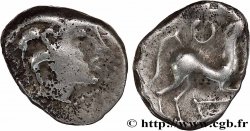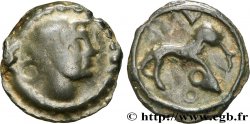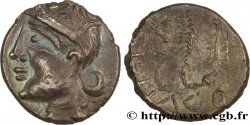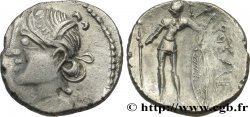v57_0433 - GALLIA - GALLIA DELLO SETTENTRIONALE - ÆDUI (BIBRACTE, Regione dello Mont-Beuvray) Quart de statère en électrum à la lyre, type de Chenôves
MONNAIES 57 (2013)
Начальная цена : 580.00 €
Назначить цену : 950.00 €
Цена реализации : 580.00 €
Количество ставок : 1
Максимальная предлагаемая цена : 580.00 €
Начальная цена : 580.00 €
Назначить цену : 950.00 €
Цена реализации : 580.00 €
Количество ставок : 1
Максимальная предлагаемая цена : 580.00 €
Тип Quart de statère en électrum à la lyre, type de Chenôves
Дата: c. 70-50 AC.
Монетный двор / Город: Autun (71)
Металл: electrum
Диаметр: 11,5 mm
Ориентация осей монеты: 5 h.
Вес: 1,47 g.
Редкость: R2
Комментарии о состоянии
Agréable monnaie, en bas or. Droit et revers homogènes, d’un style assez fin, avec une tête complète mais un revers très légèrement décentré sur sa partie supérieure. Patine grise, légèrement irisée
Лицевая сторона
Аверс: легенда: ANÉPIGRAPHE.
Аверс: описание: Tête humaine laurée à droite, la chevelure stylisée ; grènetis.
Обратная сторона
Реверс: легенда: ANÉPIGRAPHE.
Реверс: Описание: Cheval galopant à droite ; au-dessus du cheval, l'aurige ; lyre sous le cheval.
Комментарий
Ces monnaies du type de Chenôves se divisent en trois types ; à la lyre (classe I), à la rouelle (classe II) ou au triskèle (classe III).
Le traitement de la chevelure semble un peu plus simplifié que sur le statère DT. 3176 avec les mèches en forme de gouttes et aux extrémités enroulées. Cet exemplaire est issu du même coin de revers que le DT. 3177 (BN. 4845).
Le traitement de la chevelure semble un peu plus simplifié que sur le statère DT. 3176 avec les mèches en forme de gouttes et aux extrémités enroulées. Cet exemplaire est issu du même coin de revers que le DT. 3177 (BN. 4845).







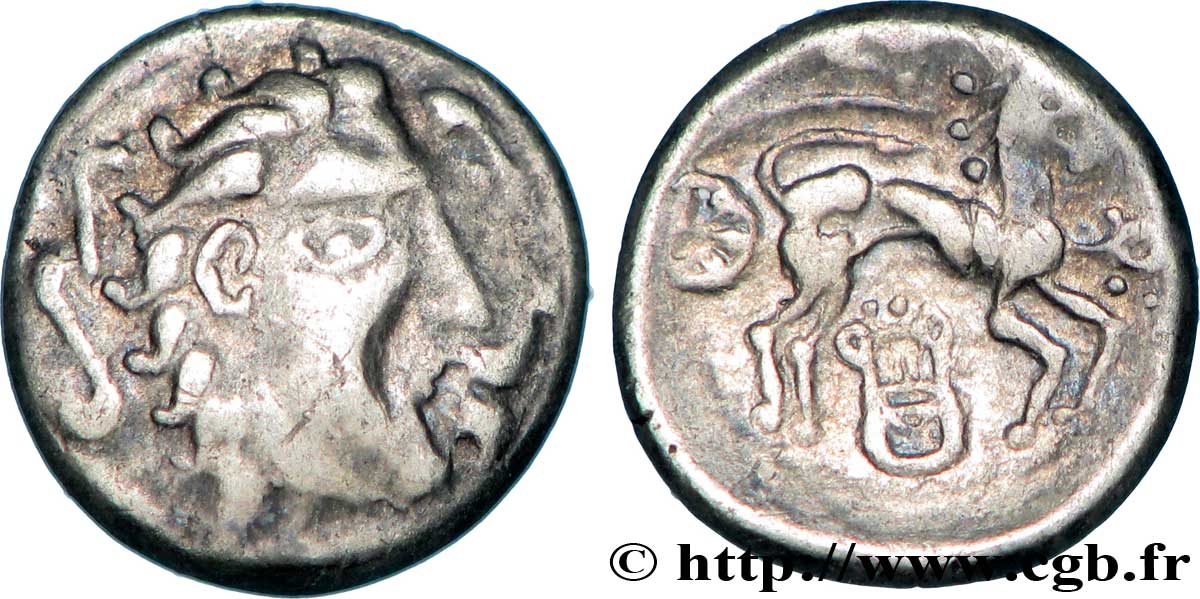
 Cообщить об ошибке
Cообщить об ошибке Распечатать страницу
Распечатать страницу Отправить мой выбор
Отправить мой выбор Задать вопрос
Задать вопрос Consign / sell
Consign / sell
 Информация
Информация